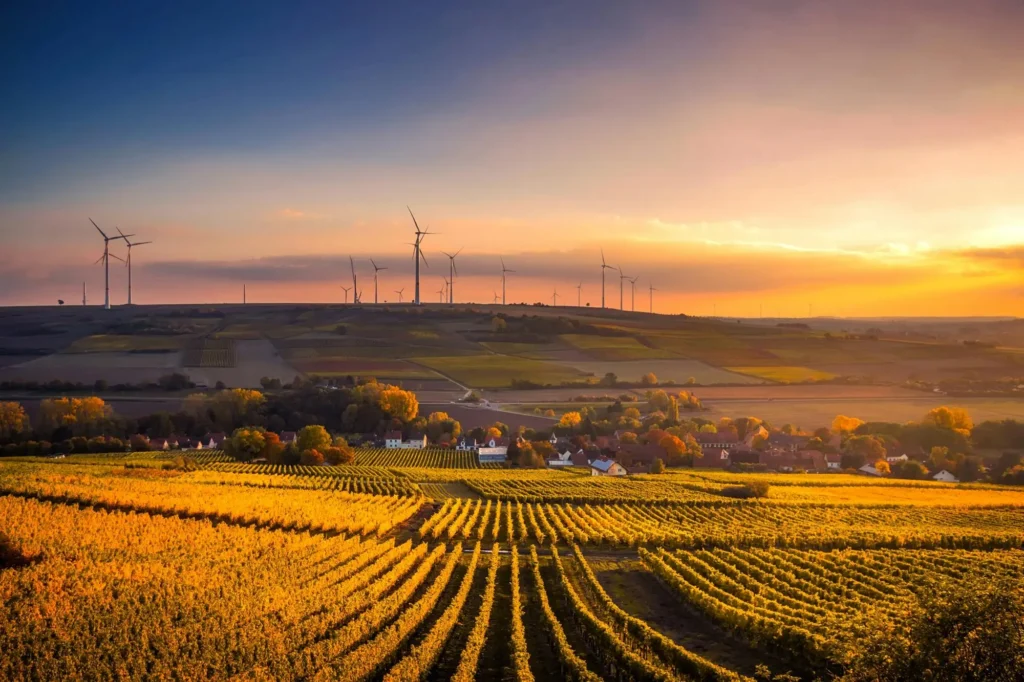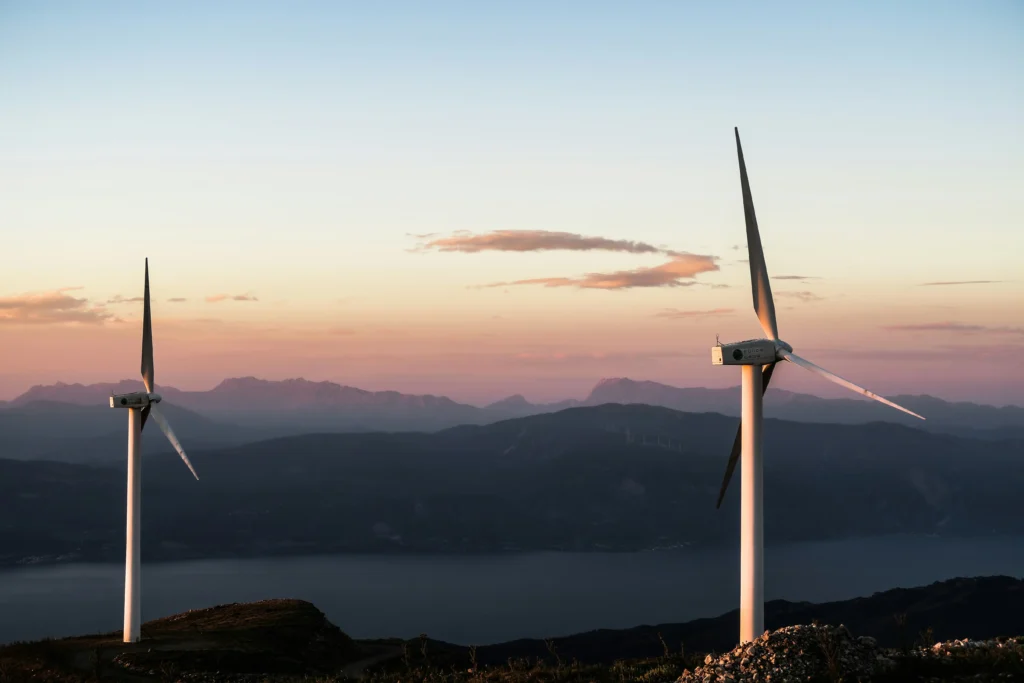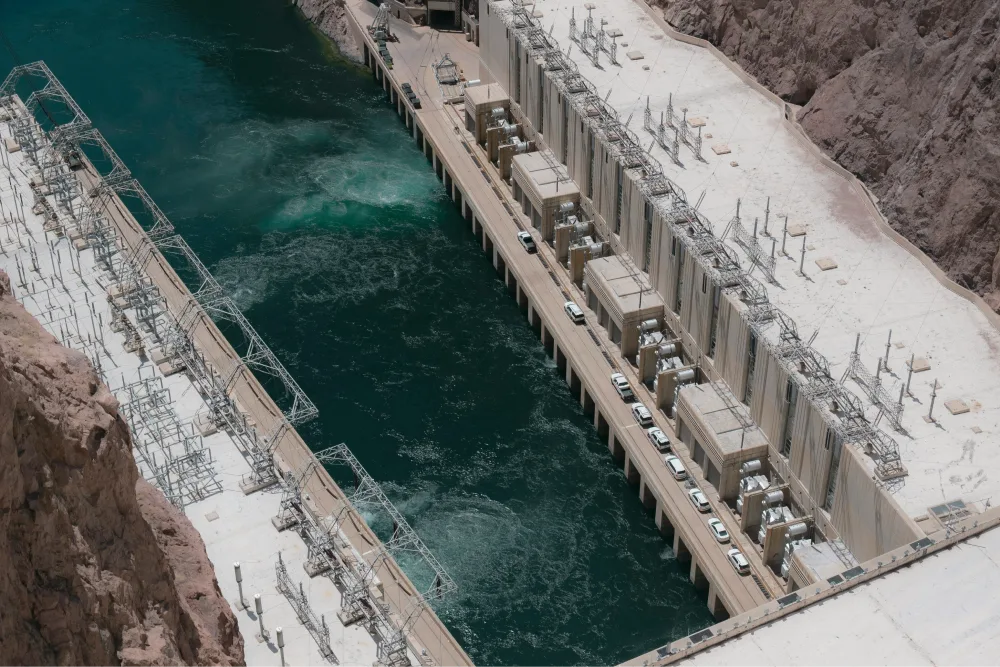
Is Wind Energy Renewable?
Is wind a renewable source of energy?
4 minute read • Last update January 2025

In this article
Is wind energy renewable?
Wind energy is a renewable resource because wind is an abundant and inexhaustible resource that naturally replenishes itself on a human timescale. Other renewable resources include solar, wind, biomass, geothermal, and hydropower. Unlike fossil fuels, which take millions of years to form and are finite, wind is a clean, sustainable source of energy that can be harnessed as long as the earth turns and the atmosphere exists.
The terms “wind energy” and “wind power” can be used interchangeably to describe the process by which the wind is used to create mechanical power or electricity. Wind turbines are rotated by wind which creates kinetic energy. This kinetic energy can be used for specific tasks (such as grinding grain or pumping water) or a generator can convert this kinetic energy into electricity.
Is wind energy a reliable resource?
While wind is a renewable resource, its reliability can vary depending on location and weather patterns. Wind flow patterns and speeds vary greatly across the United States and are modified by bodies of water, vegetation, and differences in terrain. Wind energy depends on consistent wind speeds, which are not guaranteed everywhere. Some regions experience strong, steady winds, making them ideal for wind farms. However, other areas may face intermittent wind conditions, requiring backup energy sources or storage solutions to ensure a steady power supply. Advances in technology, such as better wind forecasting and improved turbine efficiency, are helping to address these challenges and make wind energy more reliable.
A major constraint in wind energy reliance is energy storage. Improving storage solutions and technologies is crucial to unlocking the full potential of renewable energy. In Texas, the Notrees energy storage system plays a key role by storing surplus wind energy, helping to stabilize output and reduce variability. Another headwind (no pun intended) is the availability of transmission lines from wind energy farms. Improving the state’s transmission network to link regions rich in wind resources with population centers could substantially lower the costs of expanding land-based wind energy. In addition, these additional transmission lines would help electricity reach consumers during extreme weather conditions.
Wind energy in Texas
Texas is a leader in wind energy production, generating more wind power than any other state in the U.S. The state’s vast open plains and high wind speeds make it an ideal location for wind farms. Currently, over 39,000 MW of wind capacity is installed in the state, making Texas the leading contributor to the growth of wind energy in the US.
In ERCOTs 2024 fuel mix report, wind energy accounted for 24% of Texas’ electricity generation, a significant contribution to its energy mix. Major wind farms, such as the Roscoe Wind Complex and the Horse Hollow Wind Energy Center, demonstrate Texas’ commitment to harnessing this renewable resource. Additionally, the state’s investment in wind energy has created jobs and boosted local economies while reducing its reliance on fossil fuels.
Is wind energy good for the environment?
Wind energy is one of the cleanest energy sources available. It produces no greenhouse gas emissions or air pollutants during operation, significantly reducing its carbon footprint compared to coal or natural gas. Additionally, wind turbines require minimal water for operation, conserving a vital resource. However, there are some environmental concerns, such as impacts on bird and bat populations and visual or noise disturbances in certain areas. Ongoing research and technological innovations aim to mitigate these effects, ensuring that wind energy remains an environmentally friendly option.
The downsides to wind energy
While wind energy has many benefits, it is not without its drawbacks.
- Intermittency and energy gaps – wind turbines only generate electricity when the wind is blowing, which can lead to gaps in energy production. This variability requires the integration of energy storage systems or backup power sources.
- Seasonal demand versus supply – during a Texas summer, average wind speeds typically decrease, reducing the power output of wind turbines just when electricity demand increases as people rely more on energy to cool their homes.
- Energy curtailments – When wind is producing too much energy a reduction of electricity generation is required to balance supply and demand. The EIA projects that Texas’s wind and solar capacity will double by 2035, but without transmission upgrades, curtailments of unused renewable energy could rise significantly.
- Noise pllution and aesthetics – some people find the large turbines visually unappealing or are bothered by the noise they produce, particularly in residential areas.
- Upfront costs – the initial cost of constructing wind farms and installing turbines can be high, although these costs are often offset by long-term energy savings.
- Impact on wildlife – wind turbines can pose risks to birds and bats that collide with the blades.
Additionally, wind turbine blades are challenging to recycle due to their size and material composition, primarily fiberglass. While earlier blades often ended up in landfills, newer recycling techniques are emerging. Companies like Veolia North America and Global Fiberglass Solutions repurpose blades into cement and industrial products. Others, such as Carbon Rivers, use pyrolysis to convert blades into reusable materials. Innovative repurposing, like playgrounds and bridges made from blades, is also on the rise. As recycling technologies evolve, the future of wind energy’s sustainability improves.
Examples of other renewable energy sources
In addition to wind, several other renewable energy sources contribute to a sustainable energy future:
- Solar Energy: Captures energy from the sun using photovoltaic panels or solar thermal systems.
- Hydropower: Utilizes the flow of water in rivers or dams to generate electricity.
- Geothermal Energy: Harnesses heat from beneath the Earth’s surface for electricity and heating.
- Biomass: Converts organic materials like wood, agricultural residues, and waste into energy.
- Tidal and Wave Energy: Exploits the kinetic energy of ocean tides and waves to produce power.
These sources, like wind, are renewable because they rely on natural processes that are replenished continuously.
The future of wind energy
The future of wind energy looks promising as technology continues to advance and costs decline. Offshore wind farms are gaining traction, offering access to stronger and more consistent winds than onshore locations. Innovations such as floating turbines and energy storage systems are expanding the possibilities for wind energy deployment. Additionally, global efforts to combat climate change and transition to renewable energy sources are driving investment in wind energy projects. As countries set ambitious targets for reducing carbon emissions, wind energy is poised to play a central role in the transition to a sustainable energy future.
In conclusion, wind energy is a renewable, environmentally friendly, and increasingly reliable source of power. With continued advancements and strategic investments, wind energy has the potential to reshape the global energy landscape and contribute significantly to a cleaner, greener planet.
100% Renewable Plans from BKVE
Looking to power your home with green energy? BKV Energy provides 100% renewable plans sourced from wind and solar, designed for Texas homeowners and renters. Simply enter your zip code below to discover our affordable electricity options.
Written by Graham Lumley
Graham Lumley, Digital Marketing Manager at BKV Energy, leads digital and traditional marketing strategies, focusing on educating Texans about the state's deregulated energy market. With over 8 years of marketing experience, he creates content to help consumers understand and save on their energy bills, bringing a fresh and dynamic approach to the industry.
Related articles

energy hydroelectric renewable
Pros and Cons of Hydroelectric Energy
5 minute readWhat are the pros and cons of hydroelectric energy? Pros of hydropower Cons of hydropower Renewable and sustainable Impact on local environments by changing water flow Low greenhouse gas emissions High initial costs Reliable and consistent power generation Dependence on flow and availability of water Energy storage capabilities Risk of…
Get $50 off your electric bill!
Use code BKVEJOINUS50
Enter your zip code to shop BKV Energy's affordable, fixed-rate Texas electricity plans. Use the promo code for $50 off your electric bill.

